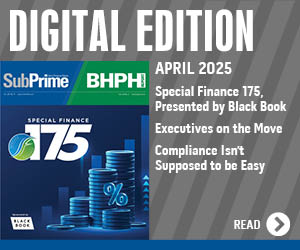Edmunds & KBB on rising new-car prices & negative equity

New data and analysis from Edmunds and Cox Automotive’s Kelley Blue Book focused on new-vehicle financing, reinforcing how difficult it might be for consumers with subprime credit to take delivery of a new model.
And the volume of negative equity experts are seeing likely isn’t helping the situation, either.
Kelley Blue Book reported new-vehicle prices in December climbed higher for the fourth consecutive month and were close to the all-time high registered in December 2022.
Average transaction prices (ATPs), as measured by Cox Automotive, typically peak in December, as high-priced models from luxury makers often sell well in the final month of the year. Analysts determined new-vehicle ATPs came in at $49,740 in December, an increase of 1.3% year-over-year and higher by 1.5% compared to November.
“It was a December to remember, in terms of both sales volumes and prices,” Cox Automotive executive analyst Erin Keating said in a news release. “As we reported just after the election, consumer sentiment and confidence have been on the rise. Vehicles, especially luxury vehicles, are typically an emotional purchase, and when consumers are optimistic, they go shopping.
“Rates dipped for a short bit late in 2024, discounts were higher, and the glass was half full. No wonder we saw the lift in both prices and volume,” Keating continued.
Meanwhile a growing share of Americans with auto financing owe more than their cars are worth, according to Edmunds Q4 data that focused specifically on new-vehicle purchases.
Edmunds reported:
—One in four new-vehicle trade-ins are underwater. Edmunds said 24.9% of trade-ins toward new-car purchases had negative equity, up from 24.2% in Q3 2024 and 20.4% in Q4 2023.
—Americans with upside-down installment contracts owe more money than ever before. Edmunds found the average amount owed on upside-down contracts climbed to an all-time high of $6,838, surpassing Q3 2024’s record of $6,458. In Q4 2023, the average amount owed on upside-down contracts was $6,054.
—One in four consumers with negative equity owe more than $10,000 on their outstanding balance. Edmunds discovered 24.6% of vehicle owners with negative equity who purchased a new-car replacement owed more than $10,000 on their previous contract in Q4, an increase from 22.2% in Q3. Analysts spotted 8.5% of vehicle owners with negative equity owed more than $15,000 in Q4, an increase from 7.5% in Q3.
“Negative equity isn’t a brand-new phenomenon in the auto lending space — in fact, it wasn’t too long ago when more than a third of trade-ins toward new-car purchases were upside down,” Edmunds head of insights Jessica Caldwell said in another news release.
“What’s particularly alarming in the Q4 figures is that a growing share of trade-ins are hitting the double-digit mark in thousands of dollars owed, making the cycle far more challenging for consumers to escape,” Caldwell continued.
To illustrate the repercussions of rolling an upside-down balance into a new purchase, Edmunds calculated the differences in cost between consumers who financed a new vehicle involving a trade-in with negative equity in Q4 and the industry average for all financed new vehicles.
On average, analysts found that buyers whose trade-ins had negative equity took on an additional $159 in monthly payments and $12,388 more in total amount financed than the industry average for all financed new vehicles.
Both of those figures represent all-time records, according to Edmunds tracking.
“The ramifications for trading in a vehicle well below sea level for a brand-new vehicle can be drastic and lead to a cycle of poor auto financing decisions,” Edmunds’ director of insights Ivan Drury said. “If you find yourself significantly underwater on your loan, your best opportunity to rise to the surface is to hold onto the vehicle while keeping up with payments and maintenance.”
Edmunds Q4 Negative Equity Data
|
Year |
Share of New Vehicles |
Share of Trade-ins with |
Average Amount of |
Average Trade-in Age |
| 2024 | 43.6% | 24.9% | -$6,838 | 3.3 |
| 2023 | 44.7% | 20.4% | -$6,054 | 3 |
| 2022 | 43.9% | 17.7% | -$5,353 | 2.8 |
| 2021 | 49.0% | 14.9% | -$4,147 | 2.7 |
| 2020 | 48.3% | 31.4% | -$5,063 | 3.2 |
| 2019 | 44.4% | 32.7% | -$5,658 | 3.3 |
Source: Edmunds


